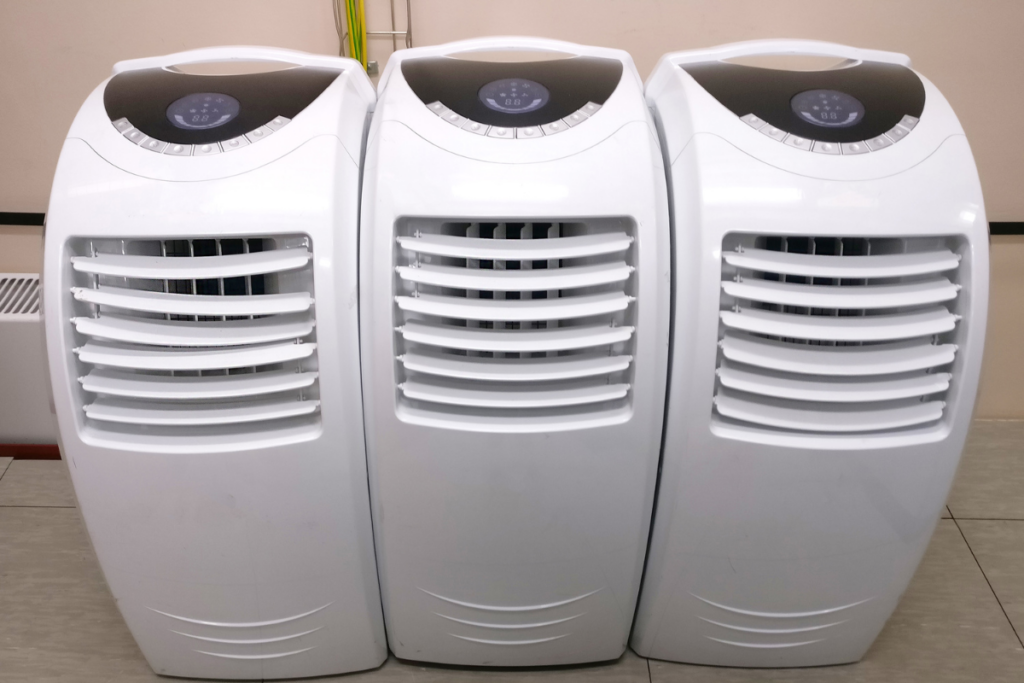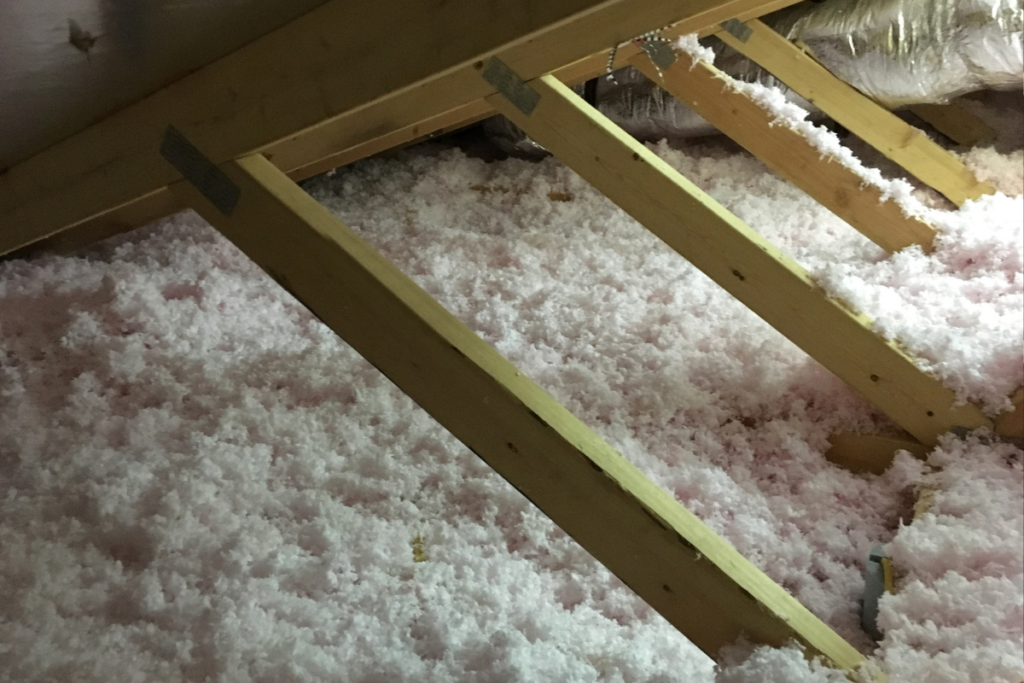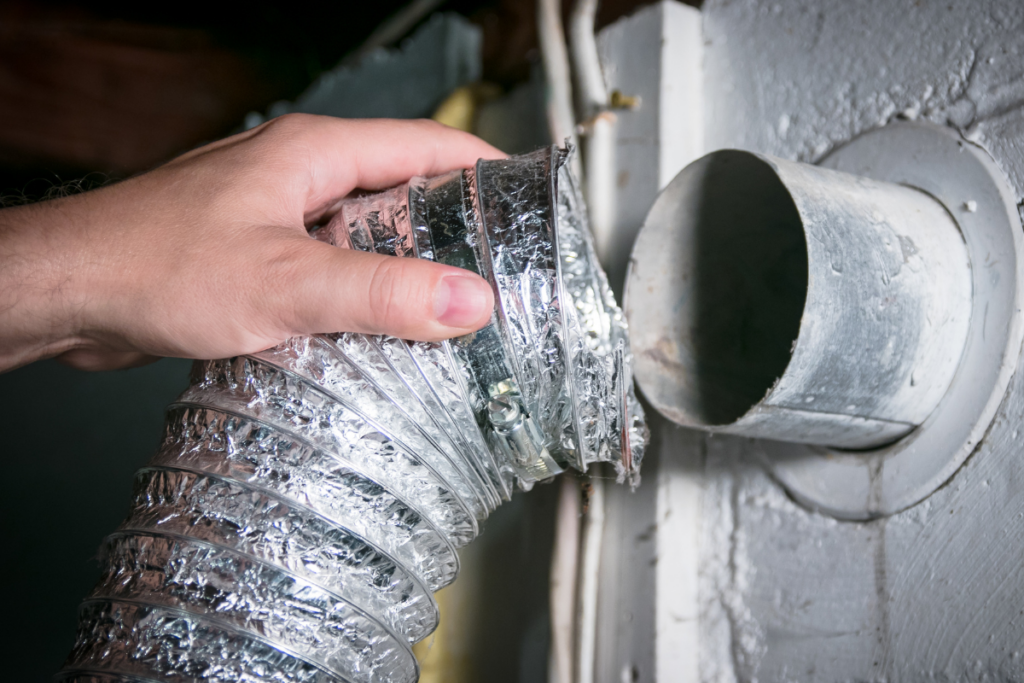Can I Vent Portable AC into Attic? [5 Things to Consider]
Central air and heating is in my personal top ten as one of humanity’s greatest inventions, but sometimes you need need a little bit more. Whether your home doesn’t have an HVAC unit or you’re trying to cool a room that either isn’t hooked up to the central unit or needs a boost, you may find yourself looking for a suitable place to vent your portable air conditioner. Can you vent a portable AC into the attic?
You can vent a portable AC through the attic, but you should consider the size of the attic, its current ventilation, and the type of air conditioner. In some cases, it may be safe to vent directly into the attic or you may need to run an exhaust duct to the outside. Either way, you’ll need to install a ventilation hose through the room’s ceiling.
Keep reading to learn how your portable air conditioner rents, whether or not it’s safe (or practical) do so through your attic, and the steps to venting through the attic.
Can I vent a portable AC into the attic?
Typically, portable air conditioners vent out a nearby window, but that’s not always possible. When a window isn’t available, can you vent into the attic?

It is possible to vent a portable AC into your attic, but you should ensure that the attic is large enough that the exhaust won’t cause it to overheat, is well-ventilated enough that the expelled moisture won’t become trapped, and that the air conditioner functions properly when connected this way.
Of course, you’ll also need to be willing and able to put a ceiling into the room in order to vent into the attic. This is a project for homeowners only!
Do you have to vent a portable AC out a window?
Not all rooms have a window available, or you may not want to vent a portable AC out of it for reasons of security, aesthetics, or convenience. Is it possible to safely vent a portable AC any other way?
Portable air conditioners do not necessarily have to be vented out a window, although that is typically the most convenient option. You can also vent through a sliding door, a regular door (left ajar), or even a wall or the ceiling.

The most important consideration when venting a portable AC is that the hot air should be removed from the area being cooled.
Can you vent a portable AC into the ceiling?
If your portable air conditioner is going to a permanent installation in the room, it’s worth asking yourself if there are more permanent ways to vent it than the window. Can you vent a portable AC in the ceiling?
You can vent a portable air conditioner into your ceiling if there is sufficient space and ventilation in the space above. If you have a finished attic or a second floor, you will not be able to vent your portable AC through the ceiling.
Depending on the location of the room in your home, you may be able to vent directly outside through an exterior wall.
Why Do You Need to Vent Your Portable AC?
Before we get into the nitty gritty of determining whether you can safely vent into your specific attic, let’s take a minute to discuss exactly why it’s important to vent your portable AC at all.
A portable AC works in exactly the same way as an HVAC, but on a smaller scale, meaning it pulls in the warm air, runs it through the motor to be cooled, and expels the warm air and moisture while blowing cold air into the room. This means that the warm air needs to be vented outside of the area in order to effectively cool the room.
Proper venting is an integral part of the air conditioner’s function since it enables it to cool a room. In the continuous work cycle, the AC draws in the hot air to cool the house then expels it outside or some other place to resume the cooling.
Venting your AC will also enable it to eliminate moisture in your house or room. The moisture elimination boost cooling since moisture holds heat.
5 things to consider before venting a portable aC through the attic
You may have realized by now that venting through the attic isn’t necessarily the most popular method of setting up your portable air conditioner. Don’t let that dissuade you!
Although possible, venting your portable AC into the attic will still need you to consider a few factors:
- Size of the attic
- Attic ventilation
- Efficiency
- Humidity control
- Hose length
Let’s take a closer look and discuss exactly what you’re looking for in an ideal attic-venting scenario.
Size of the attic
One of the most important concerns when determining if your attic can be safely used as a venting area for your portable AC is its size.
A small attic will tend to get warmer faster and will warm the house back up as the air conditioner is attempting to bring the temperature down.
This will make the AC unit work too hard to provide you with cooler temperatures.
Attic ventilation
Once the heat is in the attic, it will still need an avenue to escape.
The better the ventilation in the attic, the easier it is for the excess heat to escape after venting. Proper ventilation normalizes the temperature of the attic and will prevent instances of overheating.

An overheating attic will cause a hotter house, and you will have done nothing to cool your home. The temperatures will cause the portable AC to have a more challenging time cooling your house.
Efficiency
Portable air conditioners vary in quality and efficiency.
Some air conditioners may not have the power required to properly vent the warm air up and into the attic. This can lead to poor performance and overheating.
If you are okay with dealing with the drop-off inefficiency, then you are ready.
Humidity control
Most portable air conditioners remove humidity from the air along with the heat.
Self-evaporative portable ACs eliminator moisture through the heating vent while partially evaporative units expel the water into a collection pan that must be emptied out from time to time. If excessive amounts of moisture are vented directly into your attic, you may end up with a moisture or mold problem, especially if the attic isn’t well ventilated.
If you’ll be ventilating into the attic, you should choose a partially evaporative unit and try to avoid running it on the dehumidify setting.
Why is my portable AC producing so much water? Check these top 5 reasons!
Hose length
You will also need to consider the length of the hose before you can vent your portable AC into the attic.

The shorter the hose, the more challenging it will be for you to vent it to the attic.While it could be easier to lengthen the hose with a hose extension, that could reduce the efficiency of the AC.
Your best bet is to find a portable air conditioner that comes with a hose long enough to reach ceiling as that means it has the power to expel the air over the entire distance.
What Other Ways Can You Vent Your Portable AC?
Now that you’ve seen that you can vent your portable AC to the attic, what other ways can you vent it?
The most common way to vent a portable air conditioner is through a nearby window. Other options include venting through the wall, a drop ceiling, the chimney, or into the dryer vent.
Most portable air conditioners will often come with a window venting kit to release hot air through the window. You will need to pass the venting kit through the window, which might be a security concern since the window will not be able to close completely while the AC is installed.
You can also vent your portable AC through the ceiling, the chimney, your floor, or even through another room. You can use the drop ceiling technique to create a hole in the ceiling and pass the hose through it for the ceiling.
A wall vent will help transport the hot air through the wall. You have to drill a hole that’s big enough to let the hose pass through. A sealant would come in handy, sealing the area surrounding the hole.
Some people even choose to run their vent through the floor or wall and connect it to a nearby dryer vent. This allows you to expel the warm air outside without having to make an addition exterior hole.
Summary of venting portable air conditioner without a window
As you’ve seen, it’s possible to vent a portable air conditioner through the attic, but I wouldn’t suggest it as your first choice.
Ideally, you’ll be able to vent the portable AC out of a nearby window. If you’re concerned about the window’s not being able to close, consider installing a safety lock.
If that’s not possible, venting through the attic is an acceptable option once you’ve confirmed that the air conditioner will not be pumping too much heat and moisture for the attic to handle.
Can you vent a portable air conditioner into another room?
You can vent a portable air conditioner into another room, but that room will quickly become very hot. This method isn’t recommended as a permanent solution.
Is venting a portable AC into the attic safe?
Although possible to vent your portable Ac into the attic, it isn’t recommended you do that. You are better off trying other methods before turning to the attic.
An atttic that is too small or not well ventilated run the risk of developing a significant moisture issue, leading to dangerous mold and mildew buildup.
How can I extend the length of the portable AC’s hose?
You can purchase an extension at your local hardware store. However, keep in mind that the air conditioner may not be able to push out the air as far as you’re able to extend the hose.
Let Us Know How We’re Doing!
Did this expertly prepared resource answer your question?
Do you have another question about home maintenance, home improvement projects, home appliance repair, or something else?
Get more information, send in questions and keep the discussion going by contacting the I’ll Just Fix It Myself company customer service team at at 1-800-928-1490 or Email us at [email protected]
